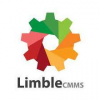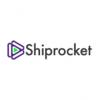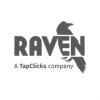One of the fastest growing market segments, SaaS Business requires a significant amount of creativity, planning, and execution to create a market impact. It also requires a significant upfront investment before it turns into a profitable venture. Most SaaS business startups need upfront investment before they can get some revenue. To do this, the owners and the entrepreneurs need a dedicated business plan.
Every business plan needs to follow a proper structure, answer some basic questions, and have a clear business plan to maximize the chances of raising capital from potential investors.
What is the need for the business plan?
- Strategy: Working on the strategy while building the business plan helps clarify the business strategy that the product needs to follow. What will be the payment model, and what are the main features the business needs to focus on?
- Financial Plan: The Business plan includes the financial plan, which is one of the most critical aspects of creating the business plan. It takes months and even a year to recover the initial investment. Thus, the entrepreneur needs to have a sound financial plan for the business.
- Customer Acquisition Plan: The business plan needs to have a customer acquisition plan.
- Market Research and Knowledge: The business plan needs a detailed market study, including the target market, target audience, and how to reach them. With the market being so clustered, every SaaS Business needs to clearly understand the direct and indirect marketing channels through which the business will reach the customer base.
Types of Business Plan
With the digital transformation and the market moving towards agility, the entrepreneurs can move towards creating two types of business plans. The first and most obvious choice is the traditional business plan, which includes the executive summary, company description, market analysis, organization structure, product, marketing plans, and financial plans.
The agile business plan is the second type of business plan that angel investors and entrepreneurs are looking at these days. It covers all the necessary information and keeps some space to incorporate the dynamic SaaS Business World. The lean SaaS Business Plan includes the Business Offering, The Product Value, Audience Outline, and Revenue Streams.
Traditional SaaS Business Plan Structure
The entire business plan consists of particular plans and the information every business needs to follow.
- Executive Summary- The executive summary is probably the most essential part of the business plan. It is the first impression for the investors, and it needs to be to the point and concise. Some of the critical questions that the entrepreneurs need to answer in the executive summary are:-
- What is the problem being solved with the product/service?
- What is the solution?
- Who are the mastermind and the cofounder of the business?
- Is there any earl traction to it?
- What is the purpose of this business plan?
- The Problem: The Business plan needs to clearly state the problem the businessmen are trying to solve with the offering. By stating 2/3 target points through which the SaaS Software is trying to enter the market, it becomes easier for the investors to focus.
- The Solution: With the business idea and the problem they are trying to solve, the business plan needs to have the proper solution so that the investors have a clear idea of the solution. This section needs to detail how the problem is being solved and should focus on the benefits for the customers. This should be done while clarifying the problem each benefit is solving. This gives a clear view to the investors that the product is solving a problem faced by the customers.
- Market Opportunity: The Business plan needs to clarify the opportunity for the product in the market. It should be able to answer two main questions:
- What is the target market size?
- How fast is the market growing?
While operating in the niche market, it becomes challenging to get clarity into these questions as the information is not publicly available, and there is a high level of estimation involved. The entrepreneurs can use the public data from multiple resources such as public reports, specialized press, etc.
- Competitive Market: Before entering the market, all businessmen must clarify who their competitors are and how they operate in the market.
Did you know that 3 plates in the market are on the 90% share in that industry? Thus, the business plan needs to have answers to the following questions.
- Who are the competitors?
- What is the region in which they are operating? Are they local, regional, national, or international?
- What is the mode through which they are operating?
The business plan also needs to mention where the business will be positioned in the market. What is the USP on which the product operates, and what are some of the competitors' features not have?
- Business Model: After analyzing the problem and the solution that you are giving to the users, the next part of the business plan needs the business model. This portion of the plan answers two main questions.
- How does the product work: The business model needs to have answers and a detailed description of what the SaaS Product Lifecycle is going to be. How the customers will see the product and how they will interact with the software. There should be a detailed plan for all these questions.
- Pricing Structure: The business model also needs to have a clear view of how the pricing model is going to be. Every SaaS Business has a different pricing structure, including per user, per usage, and flat tiered. Every pricing structure has its benefits and disadvantages. The entrepreneur needs to analyze this and develop the best pricing structure that suits his/her business.
- Intellectual Property Plan: Some of the SaaS Business Models have features and ideas that need to be protected from competitors' copying. Make sure not to use too technical language in this. Investors do not need to get confused with the technicalities. They need to know whether the product is a white-labeled solution to a proprietary back-end database, how many engineers will be required, how many resources are already present, and how much investment is already made.
- Marketing Strategy: Be it any business, the marketing strategy is probably one of the most important aspects of the business plan. Each Product/service/business needs to be portrayed to create an impact in the customers' minds. The marketing strategy needs a clear view of the inbound and outbound acquisition of the market. Additionally, all the channels need to be analyzed through which the business can reach its audience once the custom acquisition strategy is explained, along with the various tools that will be used to carry out the strategies.
Ideally, this part of the business plan includes
- The average customer acquisition cost
- Expected number of sales
- Monthly Ads Budget
- Monthly Outbound Marketing Budget
- Various KPIs, and many more.
- Roadmap: The next part of the full-fledged business plan is to create the roadmap of the product journey. The roadmap tells the investors where the product is coming from, the exact place, and where the product is heading. While the investors are looking to invest in the business, they need to understand the product's journey clearly. Thus, the roadmap is quite necessary.
- Financial Plan: The business needs the right financial plan and projections. This is one of the most important aspects of the business plan for the investors as they invest their money into your business. Thus, they need to clearly understand how their money will be spent and how they will recover their money.
Additionally, the financial performance of the business is also required. Some of the Common SaaS metrics that need to be included in the financial plans are:-
- Monthly Recurring Revenue (MRR)
- Churn Rate
- ARPU and ARPPU
- LTV and CAC, and many more.
SaaS Business Key Metrics
While working on the business plan, the entrepreneurs need to correctly understand the key metrics they have to target. These figures must be at the top of the head while approaching the customers.
Churn Rate: Churn Rate is the metric at which customers unsubscribe or have stopped using the product and turned to another. The entrepreneurs need to have a clear understanding of what is the current churn rate and what are the variations that can happen. The lower the churn rate, the better the position of the product.
Customer Acquisition Cost: businessmen need to understand the cost incurred while acquiring a new customer. This can be obtained by dividing the total cost of marketing and sales by the number of acquired customers.
Monthly Recurring Revenue: The businessmen need to have a clear view of the monthly recurring revenue while keeping space for the churn rate and the account fluctuations.
Average Revenue Per Account: The entrepreneurs can obtain this by dividing the total MRR by the number of customers. This is the average revenue from one customer every month.
Customer Lifetime Value: This is the amount customers give when they are associated with your product or the SaaS business service. This can be obtained by multiplying the average revenue per account by the gross percentage margin and then dividing it by the average churn rate.
Customer Retention Rate: This is another important metric that all business owners need to target. This tells how many customers have been using the software over the period and have become brand loyal. To obtain this, one needs to divide the number of customers currently using the software by the total number of customers at the start of the specific period, then multiply by one hundred to get the percentage.
Lean Business Plan
Now, as we have discussed the traditional business plan, let us look at the new concept of the lean business plan. Lean Business Plan is suitable for companies and startups in their earlier stages of development and has to change their product continuously due to the industry's dynamic nature. These business plans leave more room for changes and accommodate different product lines, packages, and the changes that will eventually happen over time.
Advantages of Lean Business Plan
With the SaaS Product, the businessman needs to provide information related to the product offering that serves various functions. This helps explain the various offerings to clients, users, and angel investors.
Product Value: Here, the business plan explains the product value and how it caters to the users' needs, its USPs, and how it will create a better impact on the minds of the users than that of the competitors.
Outline the audience: Be it any business plan, all it needs is a clear understanding of the target audience and how they will benefit from your product.
Cost Structure and the Revenue Stream: All business plans need a clear revenue stream and cost structure. All angel investors need to know the fixed and variable costs and how the product will earn revenue.
Thus, creating a SaaS Business Plan is one of the most important stepping stones in the journey of the business One needs to have an obvious path and roadmap with detailed information.


















